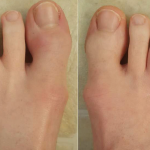Editor’s note: What research on psoriatic arthritis (PsA) presented at ACR Convergence 2024 has the greatest potential for a positive impact on clinical care, treatment options or serve as the basis for future research? That’s the question The Rheumatologist asked David S. Pisetsky, MD, PhD—our founding editor—to consider. Dr. Pisetsky, a professor of medicine and immunology at Duke University School of Medicine and a staff rheumatologist at the Durham VA Medical Center, both in Durham, N.C., has curated the research abstracts and posters and gives us his take on the most important research on psoriatic arthritis being presented at the annual meeting.

ADOBE PHOTOS | and.one
WASHINGTON, D.C.—In this report, we identify important research on psoriatic arthritis (PsA) presented at ACR Convergence 2024, summarize the abstracts and comment on why each is important, addressing the relevance for clinicians and the potential impact on future research.
1. Sex-Related Differences
Abstract 0588: Coates et al.1
Although rheumatic conditions share many features in common (e.g., inflammatory arthritis), they nevertheless differ in the role of sex on the frequency and severity of disease, an important issue for both disease management and investigation into pathogenesis. In contrast to rheumatoid arthritis (RA) and systemic lupus erythematosus, with a prevalence among women, PsA shows more similar rates among men and women. Real-world experience suggests some relevant clinical differences in clinical manifestations and disease outcome. To elucidate these differences, Coates et al. analyzed baseline characteristics of patients in three phase 3, randomized clinical trials for guselkumab, an inhibitor of interleukin 23 (IL-23).
The results of this analysis indicated that female patients have less severe psoriasis, a longer duration of PsA and a greater impact on quality of life than male patients. Other differences included more frequent enthesitis in women, although dactylitis was more common among men. Women also reported more fatigue.
The basis of these differences is not clear although they suggest the impact of sex on various manifestations of immune-mediated disease perhaps related to the respective roles of autoimmunity and inflammation in pathogenesis. PsA and psoriatic skin disease (PsO), for example, are not characterized by autoantibody production.
It is of interest in this regard that glucocorticoid use among patients in these studies was low (approximately 20% in women and 16% in men); in contrast, a trial of a new agent in RA would likely show about 50% of patients use glucocorticoids. Although speculative, these considerations could point to the differential role of hormones in the spectrum of diseases encompassed in rheumatology.



